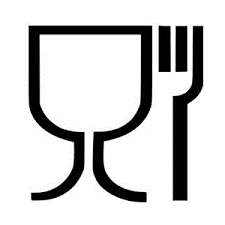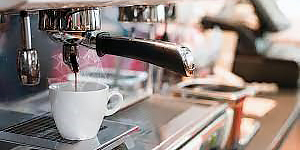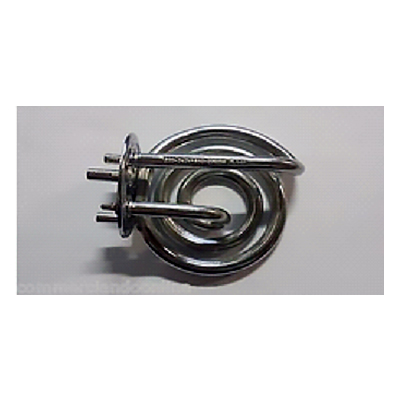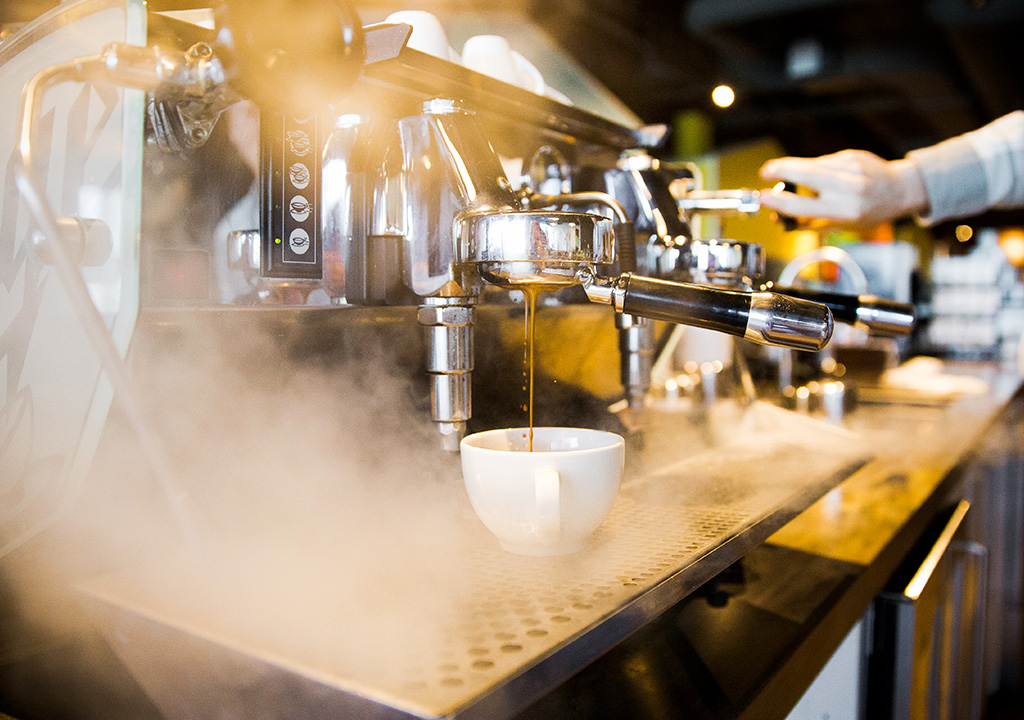WHAT IS MOCA?
MOCA is a European Council directive relating to materials in contact with food. The directive was developed to increase food production quality standards and reduce public health risks by eliminating potentially harmful contamination caused by chemical migration from materials into the product. Any valves that carry foodstuffs or convey air or gas into foodstuffs, should carry the MOCA logo.

Metal and Food: what is necessary to know
It is not so rare that customer involve our company in a new project or actual activity and request some “legal” advise on specific material: Conflict mineral, California 65 or Rhos are some examples. But if on those topics there are a considerable knowledge and experience, things are getting a bit fuzzy when it comes to brazing material for food contact.
The rules
The importance of Food or Water (This article does not refers to drinkable water for domestic use but just water as a food component.) in human wellness is crucial. European union has adopted The Reg. 1935/2004:
“The purpose of this Regulation is to ensure the effective functioning of the internal market in relation to the placing on the market in the Community of materials and articles intended to come into contact directly or indirectly with food, whilst providing the basis for securing a high level of protection of human health and the interests of consumers.”
“it is clear that EU legislator put the responsibility of food control production on manufactures, and this must be done during the risk analysis duty, to check and see if the final product is safe to be use in contact with food (and for food it means specific food).”
So also brazing material, when involved, need to be safe and guarantee no contamination in food or water.
The absolute heterogeneity nature of the brazing alloys and of the joints they are made for, makes this topic more complicated that it seems.

Coffee espresso machine are typical example of MOCA
Directive 2006/42/EC Annex I Part 2.1 The Machinery Directive transposed with Legislative Decree no. 17 of 01/27/2010 introduces the obligation on machine manufacturers to carry out a risk assessment and to use contact materials that comply with the applicable directive. The framework directive applicable for manufacturers of materials or objects in contact with food is the framework regulation (EC) 1935/2004.
As general statement the machine directive says that: “Materials and articles, […], shall be manufactured in compliance with good manufacturing practice […] do not transfer their constituents to food in quantities which could: endanger human health, bring about an unacceptable change in the composition of the food; bring about a deterioration in the organoleptic characteristics thereof”.
Also Reg.1881/2006 -set maximum levels for certain contaminants in foodstuffs, the part 3 fixes the limit of Pb Cd an Sn into food (mg/kg in fresh food), this metal can be naturally founded in some food and the directive place a limit ( Pb from 0.02 to 1.5, Cd from 0.05 to 1, Sn from 50 to 200). Still the aim of the brazing material choice should be to avoid an uncontrolled rise of the metal value in the food when they are used to produce tools or pots.
From this and the previous passage it is clear that EU legislator put the responsibility of food control production on manufactures, and this must be done during the risk analysis duty, to check and see if the final product is safe to be use in contact with food (and for food it means specific food).
A general guide
The Medicines & HealthCare of the Council of Europe (EDQM) has recently publish a general guide for “Metals and alloys used in food contact materials and articles: A practical guide for manufacturers and regulators”. Here is the link: link.
The guide can be use a general directive to be able to see what material are more or less compatible with food, but as a matter of fact the responsibility to show the armless of any items still remain on top of the producer.
Metals and alloys used in food contact materials and articles shall comply with the specific release limits (SRLs) set out below (SRLs are expressed in mg/kg.).
Stainless steel Safety aspects: No particular health concerns have been raised, in terms of excessive intakes of nickel or chromium, by several studies of corrosion in various media and of uptake of metals by foods cooked in stainless steel pans.Special grades of stainless steels are available for use in applications (e.g. those involving contact with relatively high levels of chloride ions) where particular corrosion resistance characteristics are required.
Table 1 show a general approach for brazing material, metal that is possible to find due to the joint composition and the brazing alloy typically used.
Base Material-Metal and Approval Limit Release mg/Kg
| Alloy Family / Metal Composition | Stainless steel | Copper | Alluminium | Steel |
|---|---|---|---|---|
| Bag-Ag Cu Zn (Sn) | Ag 0,08 Cu Zn 5 Sn 100 Ni 0,14 Mo 0,12 Cr0,250 | Ag 0,08 Cu Zn 5 Sn 100 | X | Ag 0,08 Cu Zn 5 Sn 100 Fe 4 |
| BCuP Cu P Ag (Sn) | X | Ag 0,08 Cu Zn 5 Sn 100 | X | X |
| BNi Ni Cr Si (P) | Ni 0,14 Cr 0,250 Mo 0,12 | X | X | X |
| BAl Al Si | X | X | Li 0,048 | X |
Fe SRL of 40 mg/kg is reasonably achievable”
Mn the SRL for manganese is set at 1.8 mg/kg”
Mo the SRL for molybdenum is set at 0.12 mg/kg”
Ni the SRL is set at 0.14 mg/kg”
Ag the SRL is set at 0.08 mg/kg
Sn “the SRL for tin is set, in approximation with
Regulation (EC) No.1881/2006, at 100 mg/kg”
Zn the SRL for zinc is set at 5 mg/kg”
Cd the P-SC-EMB decided to set the SRL at 0.005 mg/kg”
Pb the P-SC-EMB decided to set the SRL at 0.01 mg/kg”
Li the SRL for lithium is set at 0.048 mg/kg”
Hg the SRL for mercury is set at 0.003 mg/kg
How Do You Test?
“Analytical methods for release testing of food contact materials and articles” are in the Chap 3 of the guide. This procedure can give us a suggestion how to test a product. Material or article with the SRLs should be verified by experimental release testing.
(a) Testing of release from the material or article into foodstuffs should be carried out under the reasonable worst-case conditions that promote metal release for the contact during manufacture, storage, distribution and normal or foreseeable use, with respect to time, temperature and composition of the foodstuff (in particular, pH and nature of any salts and acids that are present).
(b) To verify the compliance of materials or articles with the relevant SRLs,, foodstuffs should be tested, or used in testing under actual conditions of application. example when the material or article is not yet in contact with food (i.e. non-packaging applications, food processing utensils). The intended use for specified foodstuff(s) or group(s) of foodstuffs is clearly indicated by the manufacturer or is undoubtedly recognized; when harsh physical conditions or abrasion are expected to be encountered under normal use that cannot be reproduced when using liquid simulants.
If the natural metal content of the foodstuffs is capable of significantly influencing the analytical result. In this case, the choice of alternative representative foodstuffs must be scientifically justified.
For materials or articles not yet in contact with food (i.e. non-packaging applications) but intended to come into repeated contact with foodstuffs, the release test(s) shall be carried out three times in succession. Between tests, samples should be treated as described under “Pre-treatment of materials and articles”. Where these instructions apply only to the first use or where the instructions indicate that no washing is required before or between uses, this must be taken into account.
Compliance is established on the findings from the third test. This takes account of the passivation process that some alloys or metals undergo. However, the sum of the results of the first and second tests should not exceed an exposure equivalent to daily use for one week (i.e. seven times the SRL) according to the formula:
RESULT1st test + RESULT2nd test < 7 x SRL.
This takes into account the overall acceptability of a food contact article.
Articles for repeated use, like hot beverage appliances (e.g. coffee machines), should be tested after decalcification and any other cleaning steps stated within the corresponding instruction manual. The release test must be performed according to DIN 10531.
Materials and articles other than packaging materials (e.g. kitchen utensils).
At least three samples of materials or articles other than packaging materials should be sampled.
Any instructions provided by the manufacturer with regard to pretreatment of the test specimens, such as cleaning, must be followed before release testing is performed Selection of foodstuffs. The material or article to be tested shall be brought into contact with the intended foodstuff, if available.
Natural metal content of the foodstuff. There should be prior knowledge of the natural concentration of the metal(s) in the foodstuff to be tested. Therefore, the metal concentration in the foodstuff needs to be measured before and after contact with the metallic material or article.

Methods of Analysis
Methods of analysis used for release testing of food contact materials and articles must comply with the provisions of Annex III (Characterisationof methods of analysis) of Regulation (EC) No. 882/2004. aboratories performing analysis must use validated methods for the determination of metals and other elements according to the guidelines and criteria specifically set out by the EURL-NRL FCM Network (EUR 24105, 2009).

